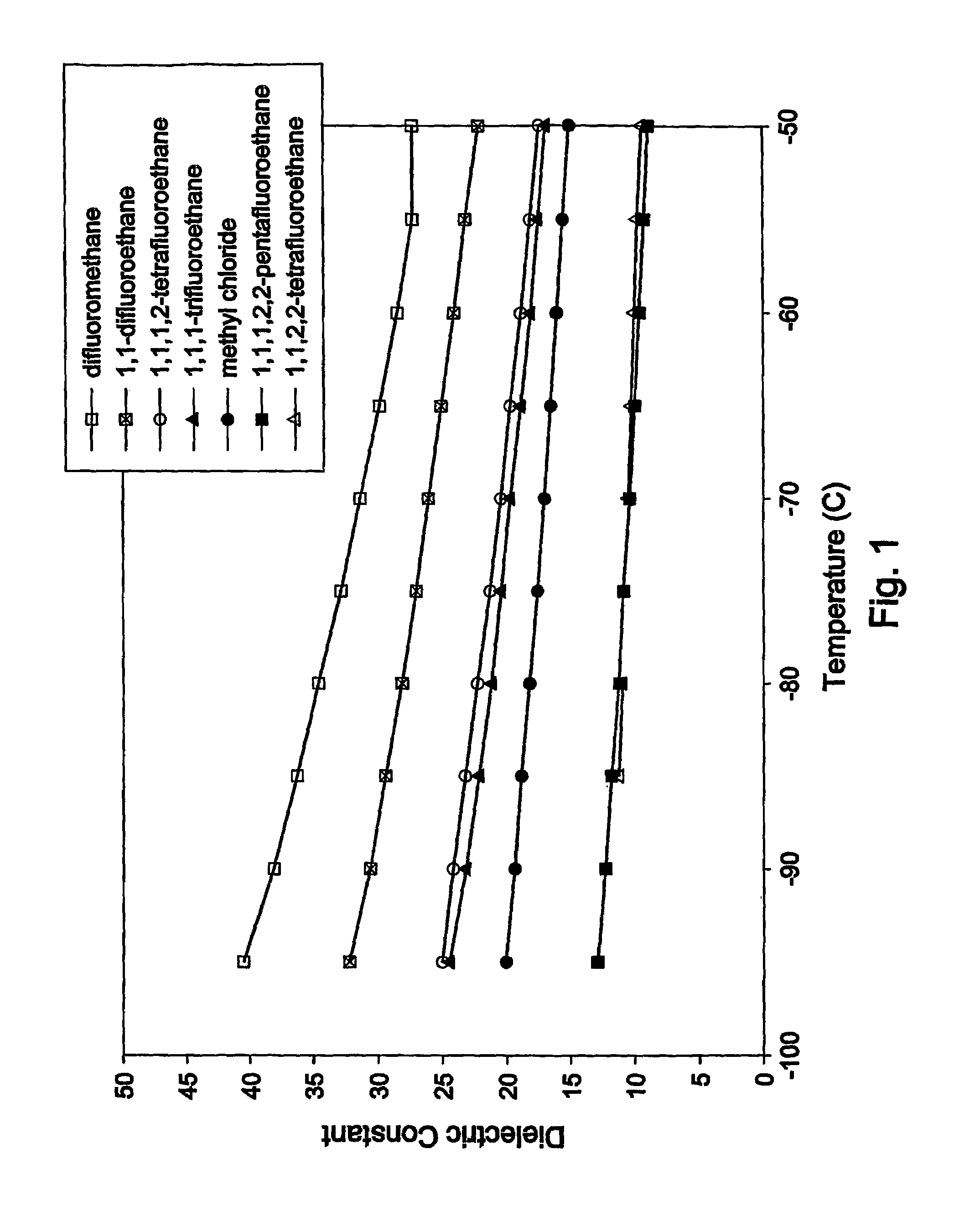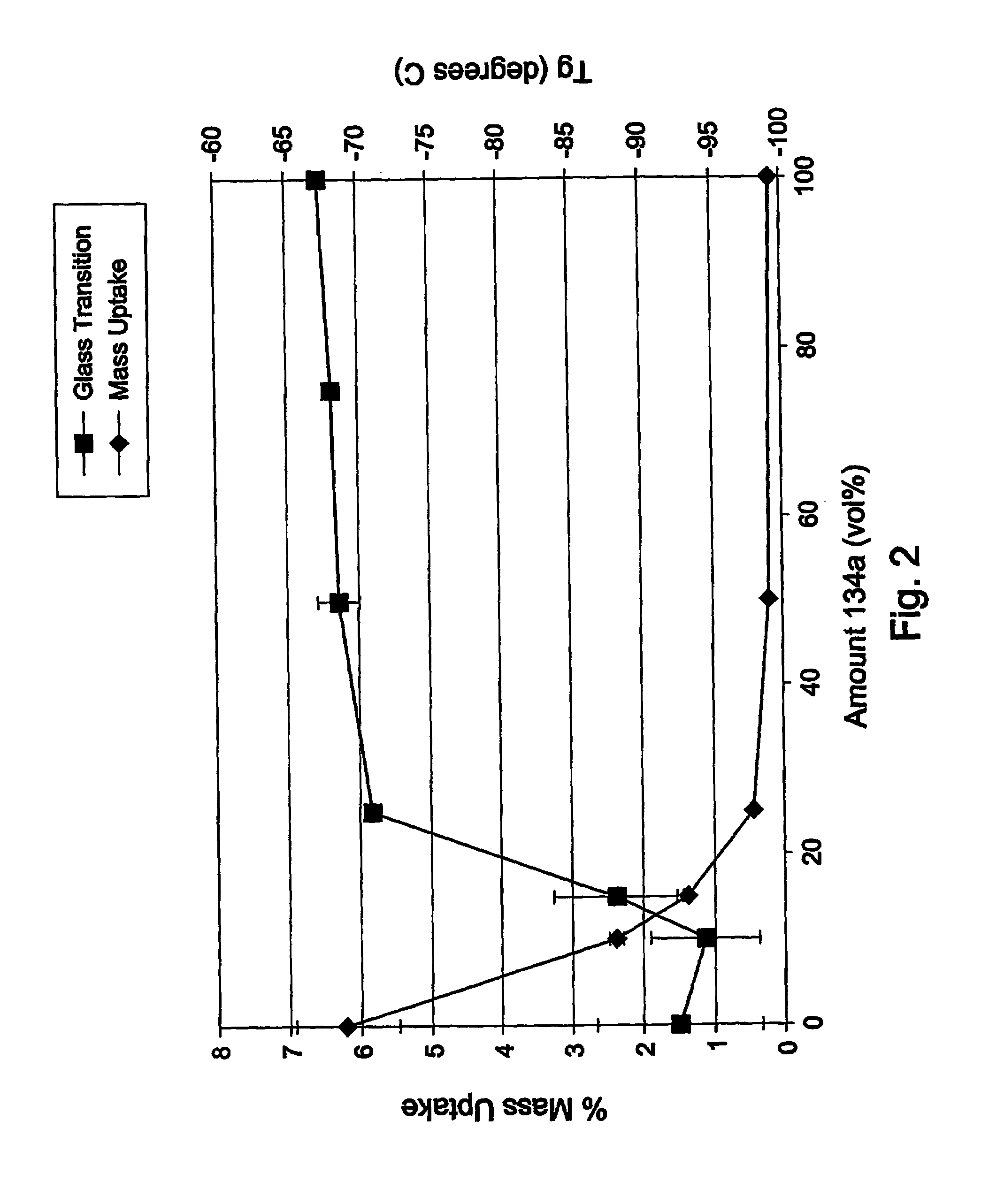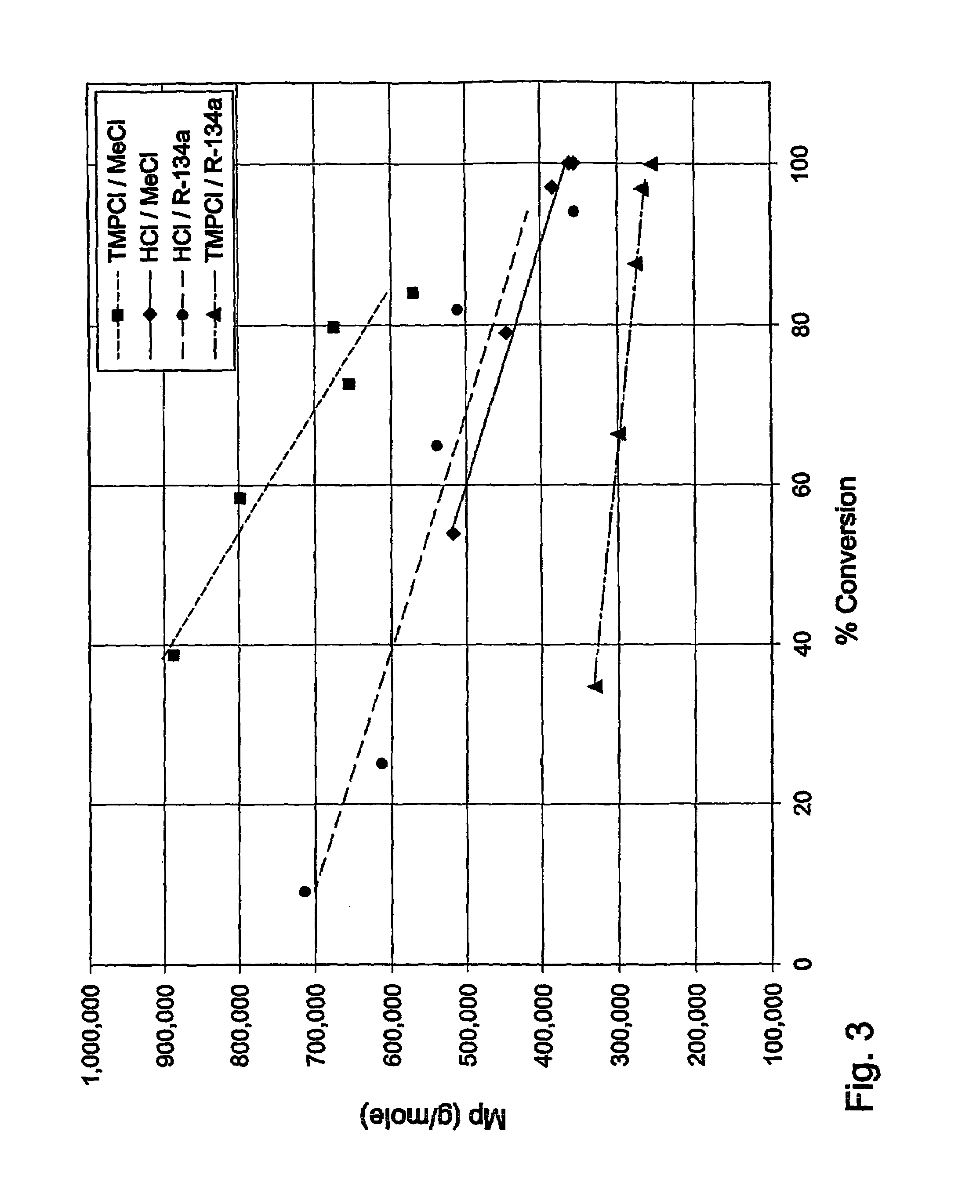Polymerization processes
a polymerization process and polymerization technology, applied in the field of new polymerization methods, can solve the problems of limiting the practical concentration of slurry used in most reactors, the mechanistically complex polymerization of isobutylene and its copolymerization with comonomers like isoprene, and the rise in the temperature of slurry
- Summary
- Abstract
- Description
- Claims
- Application Information
AI Technical Summary
Benefits of technology
Problems solved by technology
Method used
Image
Examples
examples
[0254]The polymerizations were performed glass reaction vessels, equipped with a teflon turbine impeller on a glass stir shaft driven by an external electrically driven stirrer. The size and design of the glass vessels is noted for each set of examples. The head of the reactor included ports for the stir shaft, thermocouple and addition of initiator / coinitiator solutions. The reactor was cooled to the desired reaction temperature, listed in the Tables, by immersing the assembled reactor into a pentane or isohexane bath in the dry box. The temperature of the stirred hydrocarbon bath was controlled to ±2° C. All apparatus in liquid contact with the reaction medium were dried at 120° C. and cooled in a nitrogen atmosphere before use. Isobutylene (Matheson or ExxonMobil) and methyl chloride (Air Products) were dried by passing the gas through three stainless steel columns containing barium oxide and were condensed and collected as liquids in the dry box. Alternatively, methyl chloride w...
examples 12-14
[0263]Results for polymerizations conducted at −50 to −55° C. are given in Table 2. Examples 13 and 14 are comparative examples. A 100 ml glass mini-resin kettle was used for these examples. TMPCl (2-chloro-2,4,4-trimethylpentane) was used as an initiator in these examples.
[0264]
TABLE 2aExam-Temp.YieldConversionMwMw / Molple(C.)Diluent(g)(Wt. %)×10−3Mn% IP12−55CH2F2b1.129.02052.21.913−50CH3Cl1.129.0521.51.114−55Propaneb1.230.9872.21.8aPolymerizations were run with 30 ml of diluent, 5.4 ml of isobutylene and 0.23 ml of isoprene (IP), initiator / coinitiator solutions were prepared in 1.3 ml of methyl chloride using 1.6 microliters of TMPCl and 11.5 microliters of a 1.0 M hexane solution of methylaluminum dichloridebTwo initiator / coinitiator batches added to the reactor
[0265]The polymerization in difluoromethane gave rubber particles that exhibited stiff-rubbery physical properties as evidenced by probing with a chilled spatula at reaction temperature. Minor amounts of fouling were eviden...
examples 15-21
[0266]Table 3 lists the results of polymerizations conducted at −95° C. in hydrofluorocarbon / methyl chloride blends. A 100 ml glass mini-resin kettle was used for these examples. TMPCl (2-chloro-2,4,4-trimethylpentane) was used as an initiator in these examples.
[0267]
TABLE 3aCon-Exam-VolYieldversionMwMw / MolpleDiluents%(g)(Wt. %)×10−3Mn% IP15CH3Cl / CH2FCF395 / 5 2.9774.02343.51.216CH3Cl / CH2FCF390 / 101.9047.06002.91.617CH3Cl / CH2FCF385 / 152.5864.04352.51.318CH3Cl / CH2FCF385 / 151.8346.05702.51.719CH3Cl / CH2FCF380 / 201.8546.62852.71.520CH3Cl / CH2F280 / 203.2280.03123.21.921CH3Cl / CH3CF380 / 202.8370.61792.72.2aExcept where noted polymerizations were run with 30 ml of diluent, 5.4 ml of isobutylene and 0.23 ml of isoprene (IP), initiator / coinitiator solutions were prepared in 2.6 ml of methyl chloride using 3.2 microliters of TMPCl and 23.0 microliters of a 1.0 M hexane solution of ethylaluminum dichloride (EADC)bmethylaluminum dichloride (MADC) used instead of ethylaluminum dichloride (EADC)
PUM
| Property | Measurement | Unit |
|---|---|---|
| dielectric constant | aaaaa | aaaaa |
| dielectric constant | aaaaa | aaaaa |
| dielectric constant | aaaaa | aaaaa |
Abstract
Description
Claims
Application Information
 Login to View More
Login to View More - R&D
- Intellectual Property
- Life Sciences
- Materials
- Tech Scout
- Unparalleled Data Quality
- Higher Quality Content
- 60% Fewer Hallucinations
Browse by: Latest US Patents, China's latest patents, Technical Efficacy Thesaurus, Application Domain, Technology Topic, Popular Technical Reports.
© 2025 PatSnap. All rights reserved.Legal|Privacy policy|Modern Slavery Act Transparency Statement|Sitemap|About US| Contact US: help@patsnap.com



